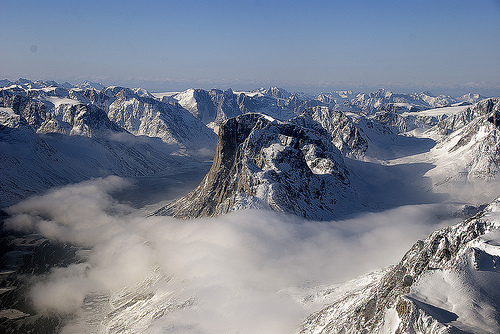If you’ve been enjoying the recent unseasonably warm weather, prepare for a buzzkill: A study published on Sunday by the Potsdam Institute for Climate Impact Research found that even a teensy global temperature increase could turn the Greenland ice sheet into the world’s largest puddle.
Previous research has suggested it would need warming of at least 3.1 degrees Celsius (5.6 degrees Fahrenheit) above pre-industrial levels, in a range of 1.9-5.1 C (3.4-9.1 F), to totally melt the icesheet.
But new estimates, published in the journal Nature Climate Change, put the threshold at 1.6 C (2.9 F), in a range of 0.8-3.2 C (1.4-5.8 F), although this would have to be sustained for tens of thousands of years.
Just to put things into perspective, obliterating the Greenland ice cap would create about 23.6 feet of sea level rise, flooding areas like Western Europe, New Orleans, and Manhattan.
It gets worse: If global warming is limited to 2 degrees Celsius (3.6 F) — the target temperature outlined in United Nations climate change negotiations — the Greenland ice sheet would melt completely in 50,000 years. But the truth is that current carbon emissions are on track to smash through that 2 degree estimate and keep right on climbing. If current rates of greenhouse gas emissions continue unchecked, one-fifth of the ice sheet would melt in 500 years, with a total meltdown happening in 2,000 years.
And here’s another bummer bit of news: According to the study, if the world warms for too long, Greenland ice cap meltage will be totally irreversible.
“Our study shows that under certain conditions the melting of the Greenland ice sheet becomes irreversible. This supports the notion that the icesheet is a tipping element in the Earth system,” says PIK researcher Andrey Ganopolski.
“If the global temperature significantly overshoots the threshold for a long time, the ice will continue melting and not regrow — even if the climate would, after many thousand years, return to its pre-industrial state.”





